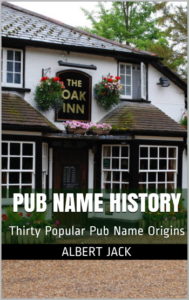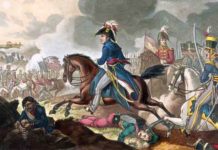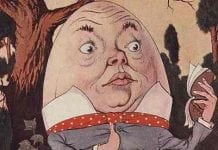
The Blind Beggar – Thirteenth-century earl who went from riches to rags
There are very few Blind Beggar pubs in Great Britain, which is not too surprising as it’s hardly the most appealing of names. Except to goths and bikers, that is: the Blind Beggar pub in Edinburgh is devoted just to them.
The original Blind Beggar, in Whitechapel Road, east London, is by far the best known, and with the most colourful history. There has been a drinking house on the same site since at least 1664, and it was there, in 1865, that the British Methodist preacher William Booth gave the sermon that led to the formation of the Salvation Army.
There was to be no salvation for the decaying building, however, as it was pulled down a few years later and rebuilt in 1894.
But the name wasn’t changed and it was still the Blind Beggar when, on 9 March 1966, gangster Ronnie Kray calmly walked into the bar and shot rival mobster George Cornell between the eyes.
No salvation for Cornell then, either, nor for Kray who spent the rest of his life in prison for the murder, not to mention a string of unsavoury crimes committed with twin brother Reggie.
The pub’s name is thought to have been inspired by a popular Elizabethan poem, ‘The Ballad of Bethnal Green’ (adjoining Whitechapel). It tells the tale of a poor blind beggar who sat at the crossroads with his begging box and became a well-known figure locally.
Over the years the tramp’s daughter, Bessie, a beautiful girl with fine manners, attracted the attention of many brave knights, all of whom rejected her when they learned of her humble origins.
All of them, that is, apart from one young gentleman, who loved Bessie enough to marry her despite her lowly background. It was only after he had asked the old beggar for his daughter’s hand in marriage that the tramp then admitted that his true identity was the rightful Earl of Leicester.
Much to the surprise of both his daughter and her suitor, he then endowed the couple with a great fortune;
This song about a beggar who long lost his sight
And had a fair daughter most pleasant and bright,
And many a gallant brave suitor had she
Because none was so comely as pretty Bessie.
So begins the ballad and, sixty-three verses later, it concludes:
Thus was the feast ended with joy and delight;
A happy bridegroom was made the young knight,
Who lived with great joy and felicity
With his fair lady, dear pretty Bessie.
The old blind beggar turned out to be none other than Henry de Montfort, son of the Earl of Leicester, whose army had been crushed at the Battle of Evesham on 4 August 1265 by the forces of Edward I, better known as Longshanks or the Hammer of the Scots.
The Earl of Leicester had been killed on the battlefield that day and his son and heir, blinded by the blade of one of the king’s knights, was left for dead.
It was there that a young baroness discovered Henry, helped him from the battlefield and secretly nursed him back to health. They later travelled to London, married and produced a daughter, Bessie, a girl of fine noble stock, although the secret was kept until her marriage.
And that is the message of the Blind Beggar of Bethnal Green: don’t be blinded by your desire for money and position, but follow your heart and be kind. A pity that Ronnie Kray didn’t follow his advice. – Albert Jack
Albert Jack AUDIOBOOKS available for download here





































